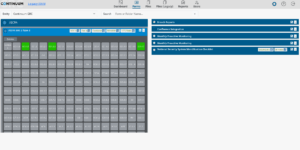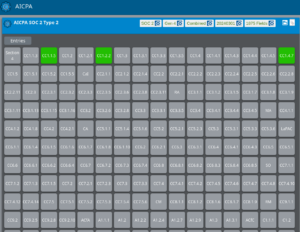Examiner: My Forms
Overview
As an Examiner in the IT Audit Machine, I find the My Forms screen to be one of the key ways to access many of the features you will need to accomplish your tasks. From this view, you can search for forms and access the data that entities have entered.
In this section of the User Guide, we’ll examine the various capabilities of the My Forms page and explore how it can help you access the forms you need for your organization.
My Forms View
When you first access the My Forms page in ITAM, you will be presented with a view of all the forms available to the organizations you oversee. Any folders created to organize the available forms will be displayed on the left, and any forms not organized into a folder will be displayed on the right.
Expanding Forms and Folders
To access a particular form, you must expose the action icons. If the form is not in a folder, you need to click on it, and the action icons associated with that form will be displayed. If the form is in a folder, you must first click on the folder name to expose the forms in accordion style.
Searching for Forms
As more forms are added to your entity, it can be easy to lose track of where various forms are kept. Instead of clicking through the multiple folders searching for a form, you can use the provided search capability to find the form you need quickly.
The search tool includes two options: one for simply searching the forms' titles and a more in-depth option for searching within the forms' elements for the terms. It also provides a powerful search-and-replace capability, which allows for quickly updating or replacing data in your forms.
Viewing Form Entries
Once a form has been expanded by clicking on it, an icon that looks like a cube will be displayed, and you will be given access to the entries created for the related form. It can be used to access the list of available entries and view the data and statistics on a particular entry. See the Form Entries section of this guide for detailed information on viewing entries.
Some forms contain fields that have been grouped into Control Groups. When those exist in a form, color-coded tiles will be displayed in a heat map underneath the form. When expanded, they will represent each Control Group. The tiles' color will represent the item's calculated state based on the item's maturity value.
In addition to being a quick way to review the state of the control groups in a form, each tile also links to the particular control group it represents in the form.
For more information about Control Groups and the representative tiles, see this guide's Form Control Groups section.

